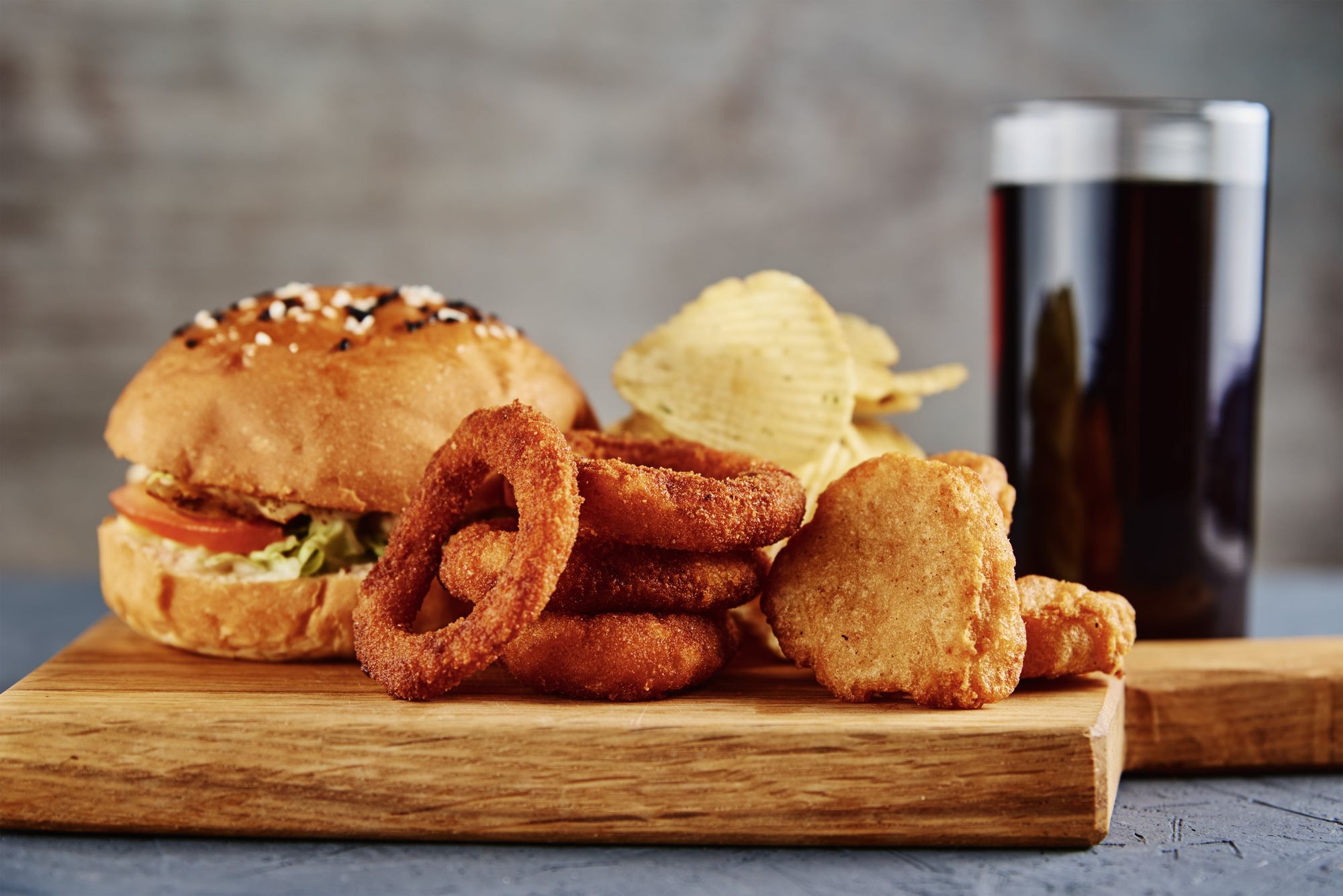
| Table of Contents 1. Gallbladder Attack Symptoms 2. What Causes Gallbladder Attacks? 3. Gallbladder Attack Treatment Options 4. Gallbladder Attack Symptoms and Treatment: The Bottom Line |
Gallbladder attack symptoms such as intense upper abdominal pain and cramping can be so painful that many people compare it to the pain of labor contractions. The gallbladder is a tiny, pear-shaped organ on the right side of the abdominal area and tucked underneath the liver. It’s responsible for storing bile, a greenish fluid secreted by the liver which eventually goes into the small intestines to digest fats and vitamins from the food you consume. You often don’t think about this small organ until it starts causing you pain.
The gallbladder may be small, and you don’t necessarily need this organ to live a healthy life, but it is part of your body’s digestive machinery. The liver continually makes bile, which is then stored in the gallbladder. When you eat, the stomach releases hormones that stimulate the gallbladder to contract to release the bile. If there are stones (gallstones) that block the ducts, or scarring that prevent contraction and impede the release of bile, your gallbladder will become inflamed (in medical terms, this is known as cholecystitis) and it will manifest as pain.
Notably, bile is composed of water, cholesterol, and bile salts. Excessive cholesterol could form together and result in gallstones. If you often feel a sudden, sharp stabbing pain in the upper right quadrant of your stomach (right below your breasts) after eating or at any time, the culprit could be your gallbladder.
Your gallbladder may be inflamed or infected, because the bile doesn’t flow properly due to the presence of gallstones. These painful episodes of intense abdominal cramping are referred to as gallbladder attacks. Learn more about this gallbladder attacks below:
Gallbladder Attack Symptoms
When we feel intense pain, it’s natural to want to figure out what’s causing this pain. Gallbladder attacks are very painful and they can last for hours. If you have gallstones and they get stuck when moving through the bile ducts, they can cause a clog. The blocked ducts prevent the flow of bile, resulting in a gallbladder spasm. This manifests as sharp pain underneath your rib cage in the upper right side or center of the abdomen, right below the breastbone.
Those who get frequent gallbladder attacks say it feels like a knife cuts through the stomach. Others say it’s similar to the pain of childbirth contractions. Some even mistake a gallbladder attack for a heart attack.
Common gallbladder attack symptoms include the following:
- Pain in the upper right quadrant of the abdomen (stomach pain) lasting for several hours
- Back pain between the shoulder blades
- Intense stomach pain in the center of the stomach that feels like intense cramping
- Nausea or vomiting
- Bloated or distended stomach
- Discomfort or stomach pain after eating
- Urine looks brown
- Light-colored or greasy stools
- Jaundice in the skin or the sclera (white part of the eyes turn a slight yellow)
- Fever or chills
There are other health conditions that cause some symptoms that are similar to gallbladder attack symptoms, which is why you need to consult with a doctor. Some other health conditions that can mimic gallbladder attack symptoms include heartburn, pancreatitis (pancreas inflammation), stomach ulcer, appendicitis, kidney stones, liver abscess, or even severe constipation.
If gallbladder attacks happen to you frequently and disrupt the quality of your life, consult with an endocrinologist. In the worst cases, once the gallbladder attack starts, nothing can be done to stop the pain.
You often have to just wait for the pain to pass, which eventually, it will. Sometimes taking a warm bath helps, and trying to relax your body in the warm water. The pain usually ceases when the gallstone passes the ducts. Many times, because of the pain’s severity, people go to the emergency room. It’s not uncommon for emergency room doctors to send you for an emergency gallbladder removal surgery.
Seeking medical attention for extreme pain is vital to rule out other issues like appendicitis, myocardial infarction (heart attack), or stomach ulcer perforations. Moreover, if your body doesn’t successfully pass the stone, it could lead to further complications like infection, abscess, rupture, and inflammation of surrounding organs like the pancreas.

What Causes Gallbladder Attacks?
There are multiple potential causes of gallbladder attacks such as gallbladder inflammation and gallbladder abscess, but gallstones are the number one cause for those painful gallbladder attack symptoms. You can find out if you have gallstones by getting an ultrasound or CT scan.
Gallstones form when digestive fluids harden in your gallbladder. This sometimes happens when there’s too many fatty foods in your diet, and there’s excessive cholesterol, which eventually forms into stones.
Gallstones range in size from a tiny grain of sand to the size of a piece of popcorn, and can even be as big as a golf ball. Most people who have gallstones have multiple gallstones that range in size.
Gallstones are the primary cause of gallbladder attacks, and it’s easy to find out if you have them, by getting your doctor to send you for an ultrasound. This issue should be addressed, rather than ignored or neglected. Even if you rarely get gallbladder attacks, you should still address this health condition, which brings us to our next point:
Gallbladder Attack Treatment Options
You could have gallstones and not feel pain, and therefore not be aware of them. However, gallstones (especially big ones) will often manifest as intense stomach pain right below the breastbone.
In general, the doctor will treat you based on your symptoms, frequency of gallbladder attacks, and the results of diagnostic scans such as an ultrasound. The first step in treating gallbladder attacks is to do imaging tests such as abdominal ultrasound or CT scan to find the root of the problem.
If you have issues with the bladder or bile duct itself, your endocrinologist may recommend ERCP or a minimally invasive endoscopic retrograde cholangiopancreatography to take a deeper look into your ducts to check for the severity of any inflammation, abscess, presence of stones, scarring, or tears. This scope is inserted through the mouth while you are under anesthesia, so you don’t feel any discomfort.
Since the primary reason for gallbladder attacks is presence of gallstones, doctors will treat a patient with chronic gallbladder attacks by removing the stones. Here are the most common gallbladder attack and gallstone removal treatment options:
- Medications: The doctor may prescribe oral medicines to dissolve the stones if your gallstones are small. Along with this, doctors recommend you switch to a low-fat diet and avoid excessive cholesterol consumption to prevent gallstone formation.
- Shockwave Therapy: ESWL or extracorporeal shockwave therapy is non-invasive because it is not a surgical procedure. The shockwaves from an ultrasound device break up the stones and eliminate them. This works for those who have small gallstones and those who still have a normal functioning gallbladder. There’s no need for anesthesia and this can be done as an outpatient procedure.
- Gallbladder Removal Surgery: Gallbladder removal via surgical operation is recommended for people who have frequent and intensifying pain in their abdomen, frequent gallbladder attacks, or large gallstones. If you often get very painful gallbladder attack symptoms, gallbladder removal is recommended. Due to advances in science, this can now be done via laparoscopic surgery, which creates smaller incisions, and is not a very invasive or complex surgery at all. A camera is inserted into the area to aid in stone removal. The other gallbladder removal surgery is the traditional open cholecystectomy, which is more invasive as it requires a larger incision, and this method is not used as often anymore.
People who have had their gallbladder removed can still live a perfectly normal and healthy life. Getting your gallbladder removed could even help prevent the onset of gallbladder cancer, a very rare and fatal cancer.
You do not need a gallbladder. Having it surgically removed will not be detrimental to digestion. The liver will just directly secrete the bile into the small intestines.
There are very few side effects of having your gallbladder surgically removed. Some of the few side effects include loose stools or sometimes having diarrhea after meals.

Gallbladder Attack Symptoms and Treatment: The Bottom Line
Some proponents of alternative therapies promote doing a detoxifying cleanse or liver flush to cleanse the gallbladder. They promote drinking a combination of olive oil, natural herbs, and juices like lemon extract over a period of time. The concoction will supposedly break up the stones into tiny particles. You could eventually eliminate the smaller gallstones by excreting them in your stool.
However, taking this cleansing concoction is not without its risks. You could be allergic or have stomach sensitivities to some components, and the ingredients could be problematic for some people such as the use of oil which could impact those who have hypertension or high cholesterol. Some who have tried it report nausea, vomiting, diarrhea, and stomach pain during the detox period.
This means it’s safer to use a standard medical approach as advised by your doctor.
Always consult your doctor when you feel intense pain anywhere in your body. If you have existing gallstones, and they are small in size, follow your doctor’s advice. This often includes diet modifications. If you have considerably large-sized gallstones and severely painful gallbladder attack symptoms, don’t ignore pain or try to endure it without addressing it. According to the American Cancer Society, an inflamed gallbladder and the presence of gallstones puts you at a higher risk of developing a fatal cancer called gallbladder cancer. Their statistics say that 4 out of 5 people with gallbladder cancer have existing gallstones. So, stay vigilant and seek immediate care when you feel something is awry with your body. Early intervention always prevents complications.
To find out if you’re genetically at higher risk of developing certain types of cancer or health conditions, take a CircleDNA test. In addition to your genetic cancer and disease risks, you’ll also get access to hundreds of reports about yourself based on your DNA, such as the best fitness routine based on your genetic body composition, your genetic success traits, genetic skin traits, and more.
References
- Risk Factors for Gallbladder Cancer (American Cancer Society, Inc) https://www.cancer.org/cancer/gallbladder-cancer/causes-risks-prevention/risk-factors.html
- Should I Try a Gallbladder Cleanse? (Rachel Nall, MSN, CRNA) https://www.healthline.com/health/gallbladder-cleanse







Comments are closed.